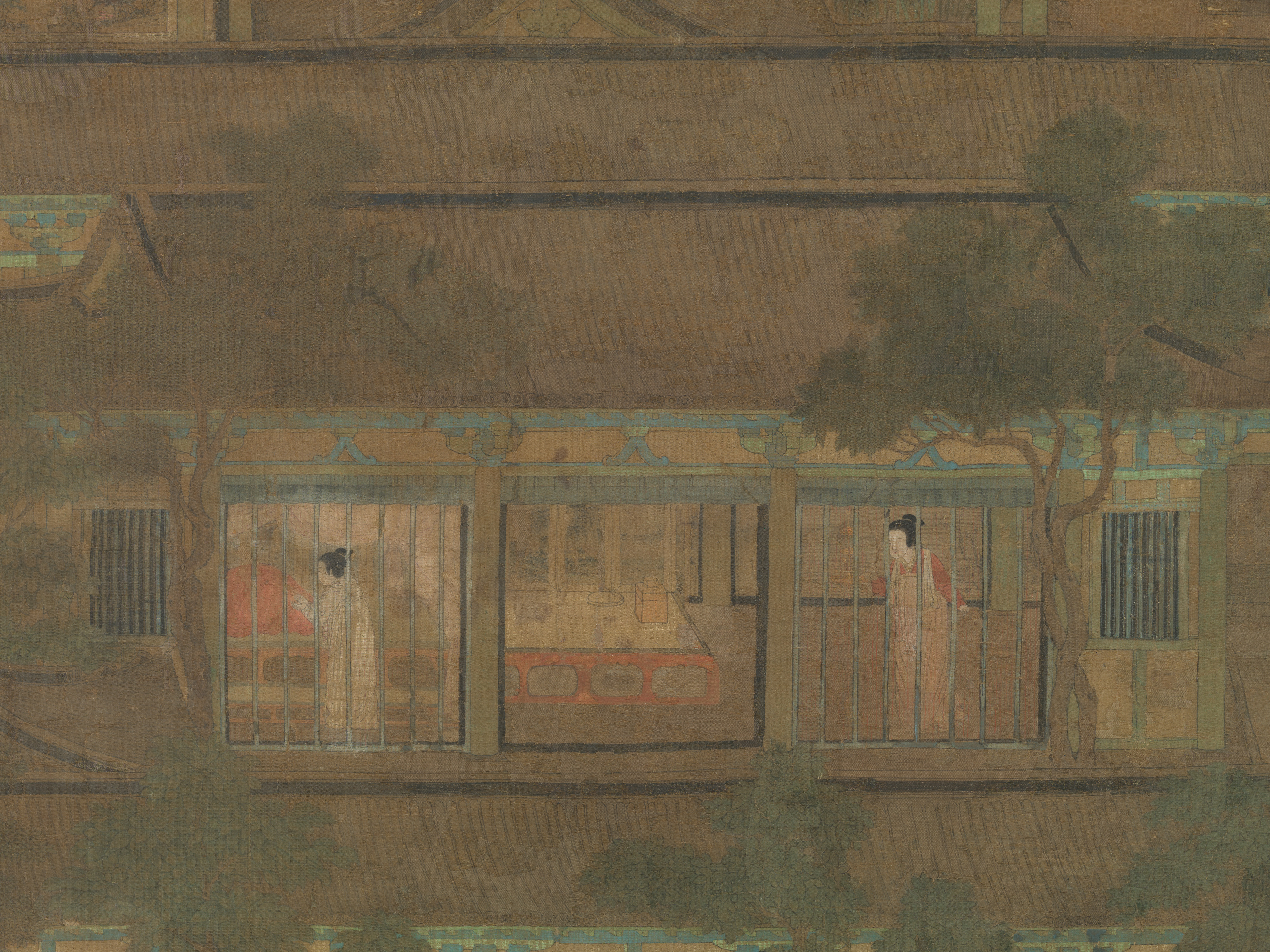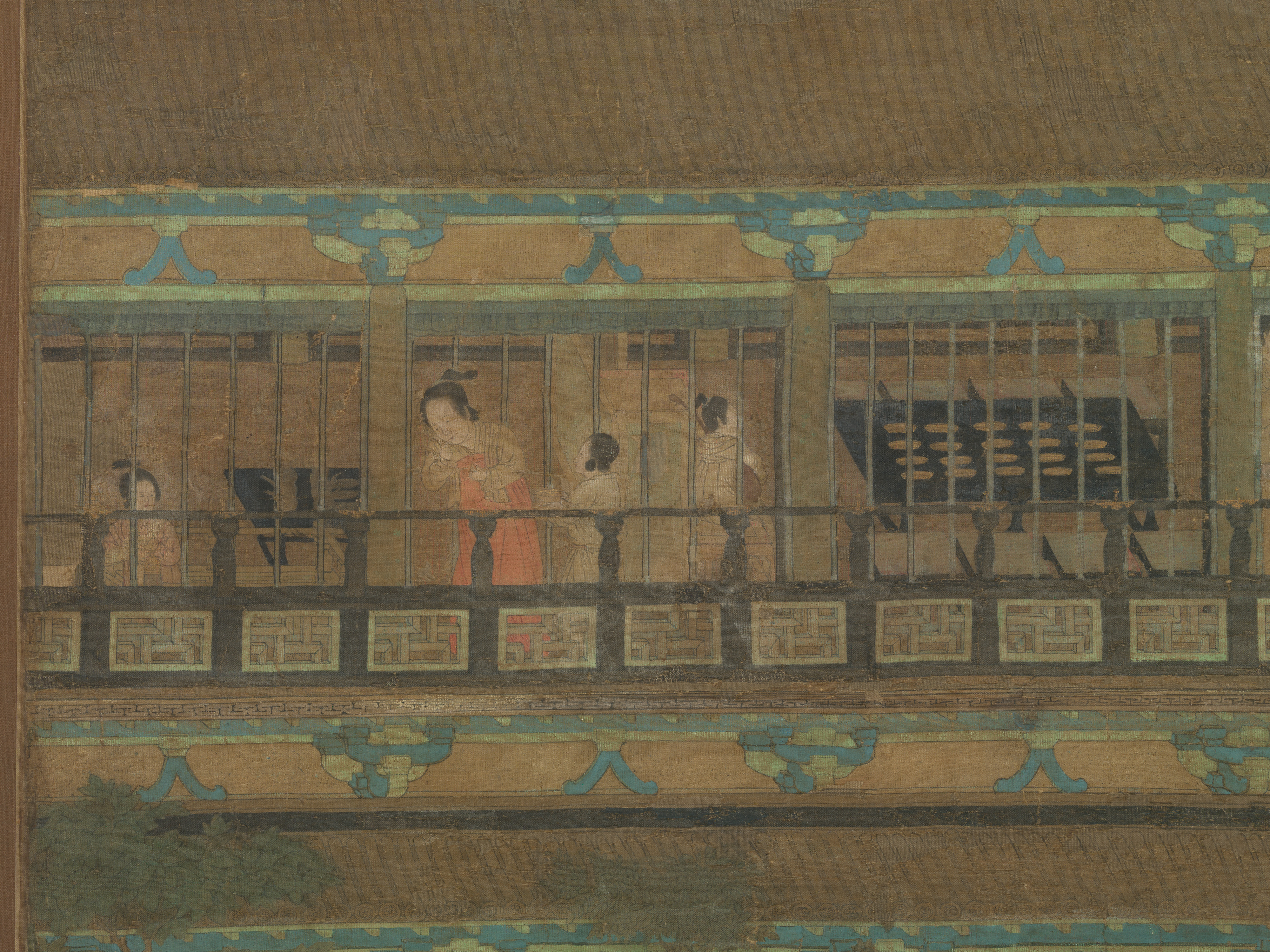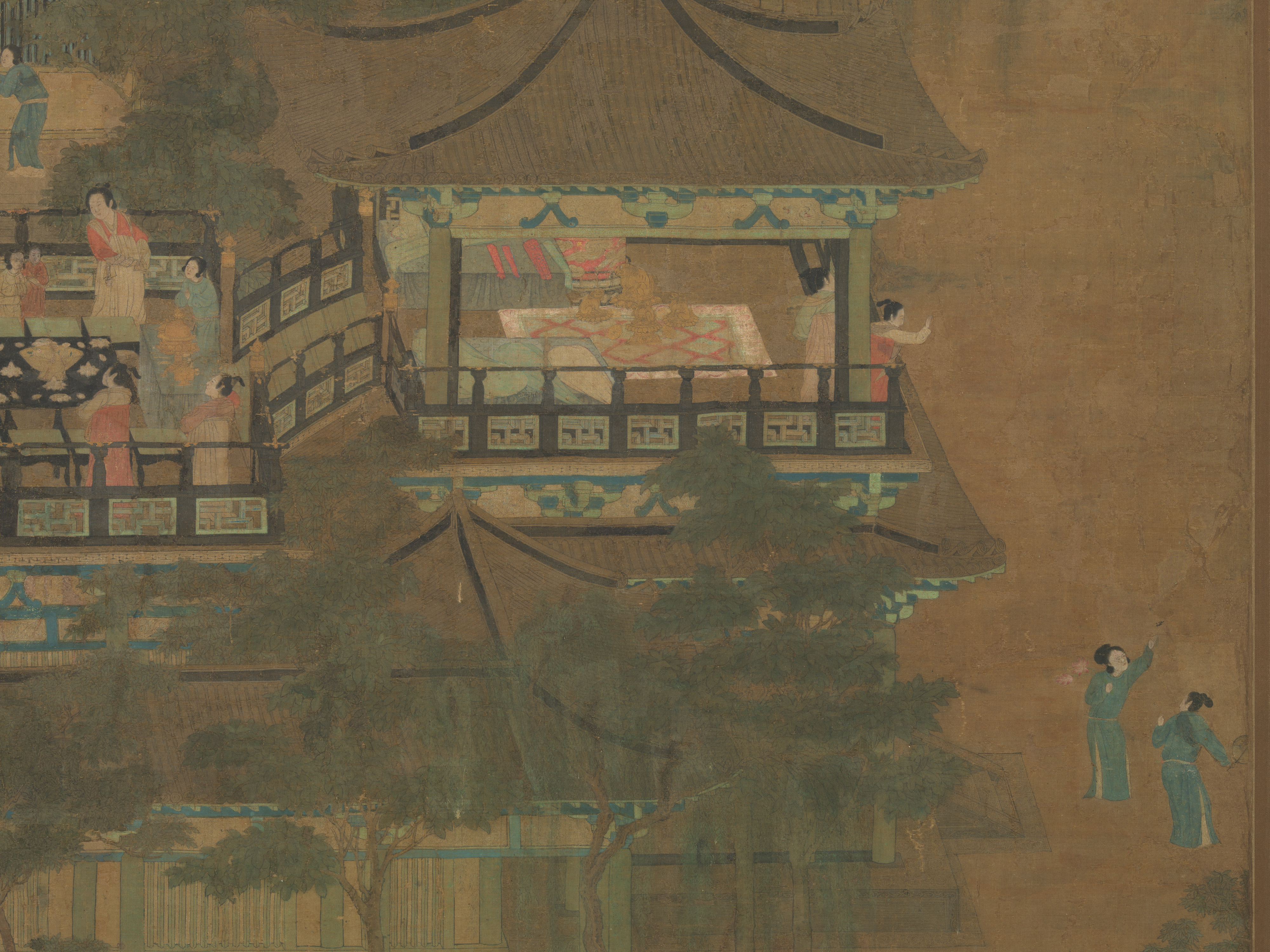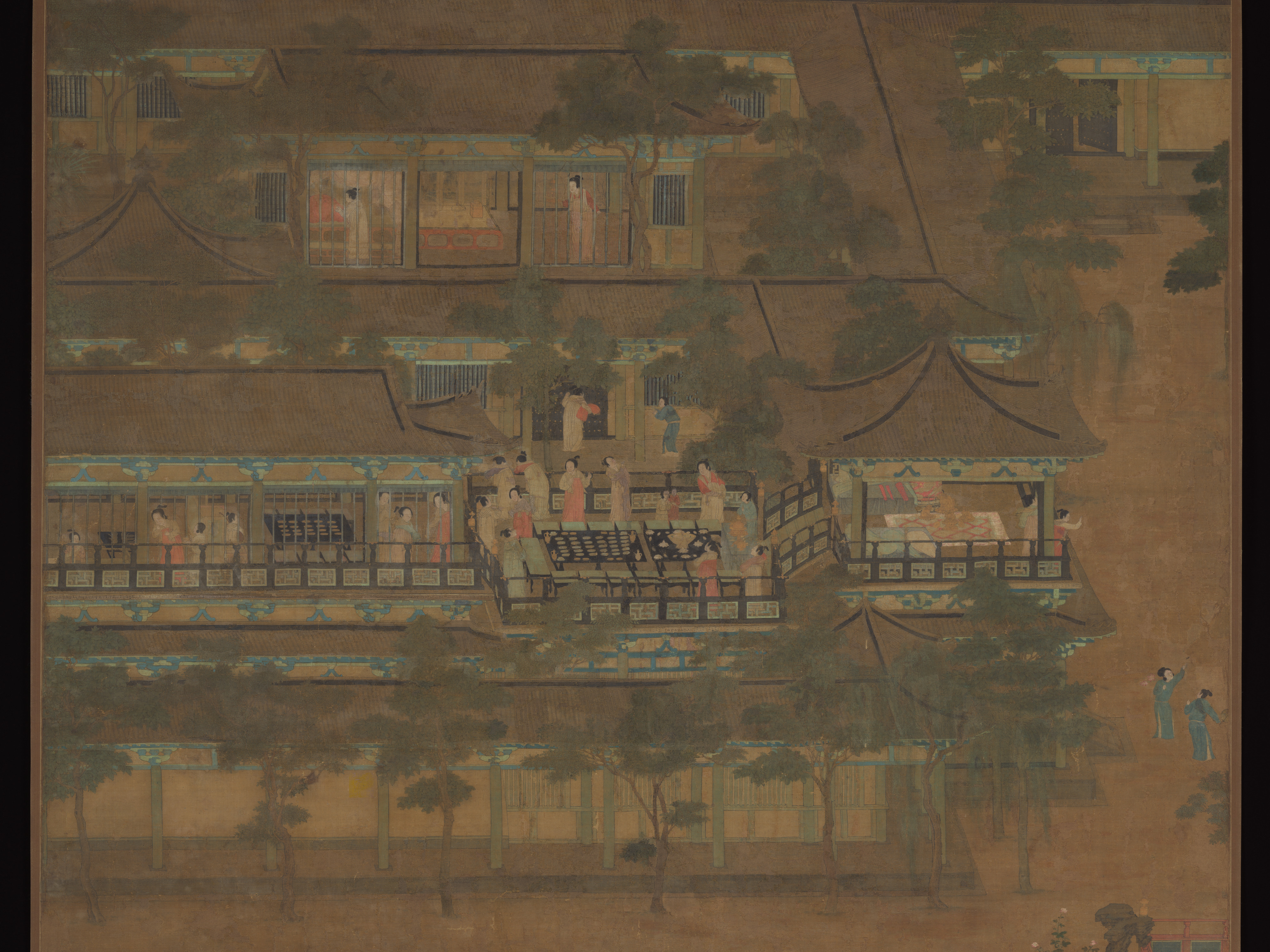Palace banquet
Five Dynasties (907–960) or Northern Song (960–1127) dynasty
Not on view
This large painting is one of the earliest surviving examples of the “ruled-line” (jiehua) genre of architectural renderings. It offers an intimate view of the women’s quarters of a palace where elegant rooms face onto private courtyards graced with trees and blossoming lotus, an indication of the summer season. Activity centers around a second-story terrace where women at a banqueting table point skyward or concentrate on threading needles. On the seventh day of the seventh month, women traditionally decorated their homes, set out fruits, and competed in threading needles as part of the festivities celebrating the one night each year when the Herd Boy and the Weaving Maid, legendary lovers immortalized as constellations, are allowed to meet. Behind the banquet, a woman knocks at a gate, beyond which, to the left, another woman claps her hands beside a bed to awaken its occupant. A third woman, to the right, gazes out beneath two trees that have grown intertwined—a symbol, perhaps, of the fateful union about to occur. At the upper right, two women prepare to open the gate to a visitor.
The painting alludes to the love affair between the Tang emperor Xuanzong (r. 712–56) and his consort, Yang Guifei, who famously slept all day to arise refreshed at night. In 755, a rebellion broke out as a consequence of the emperor’s inattention to rulership. Xuanzong was forced to flee, and the palace guards blamed Yang Guifei for the insurrection. They forced the emperor to execute her before escorting him to safety. Bai Juyi’s (772–846) epic poem, The Song of Everlasting Sorrow, describes the tragic story, beginning with the fateful tryst alluded to by the painting. Both poem and painting may be read as admonitions against neglecting state affairs.
#7334. Palace Banquet, Part 1
-
7334. Palace Banquet, Part 1
-
7335. Palace Banquet, Part 2
Playlist
Due to rights restrictions, this image cannot be enlarged, viewed at full screen, or downloaded.
This artwork is meant to be viewed from right to left. Scroll left to view more.









